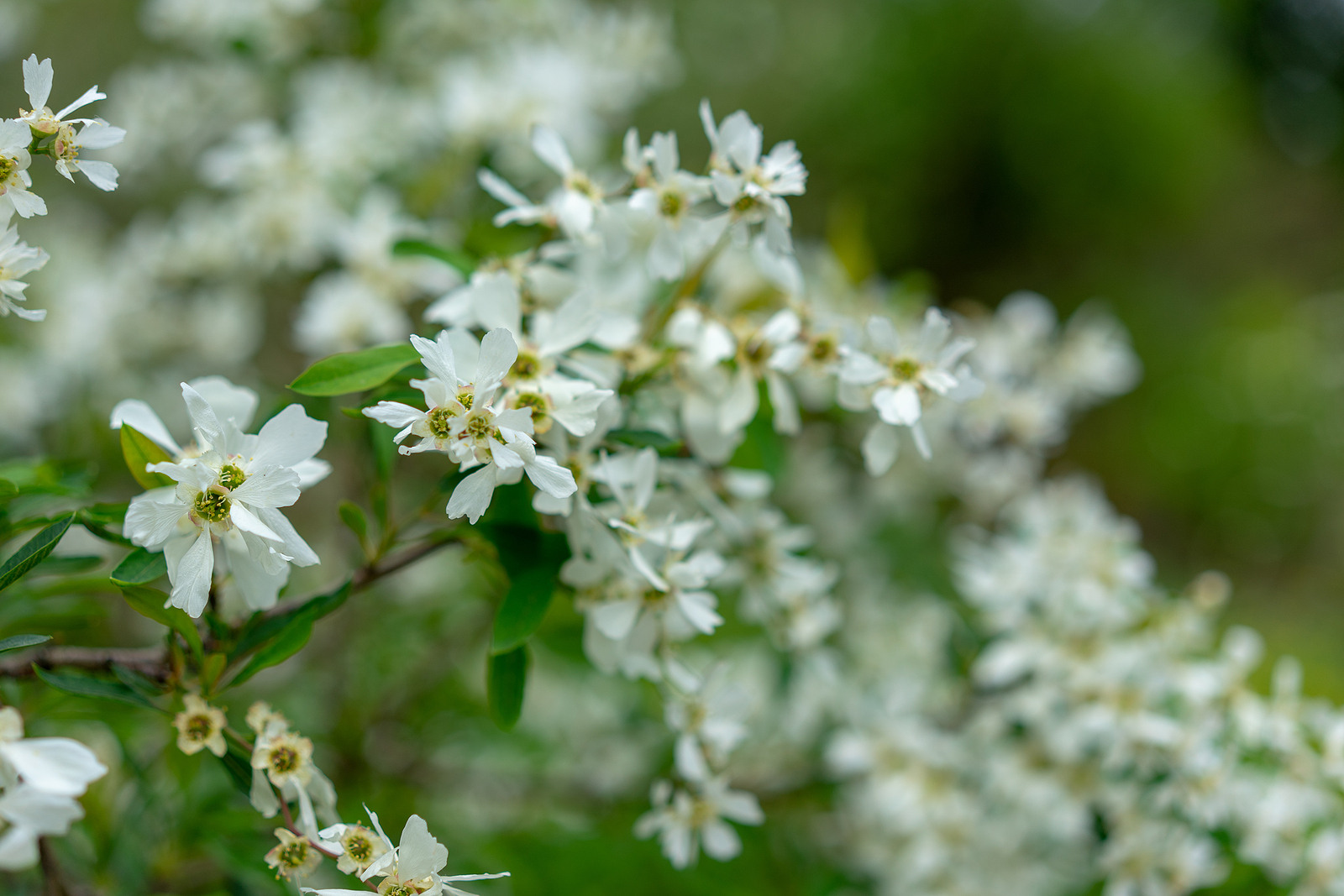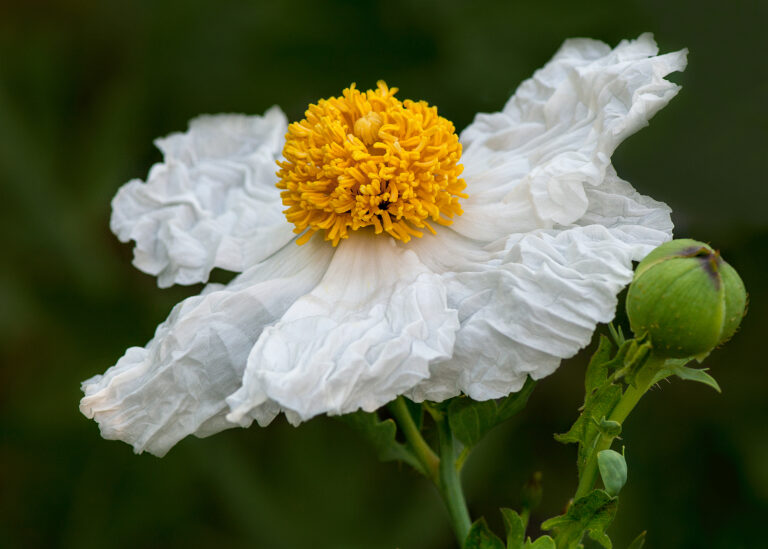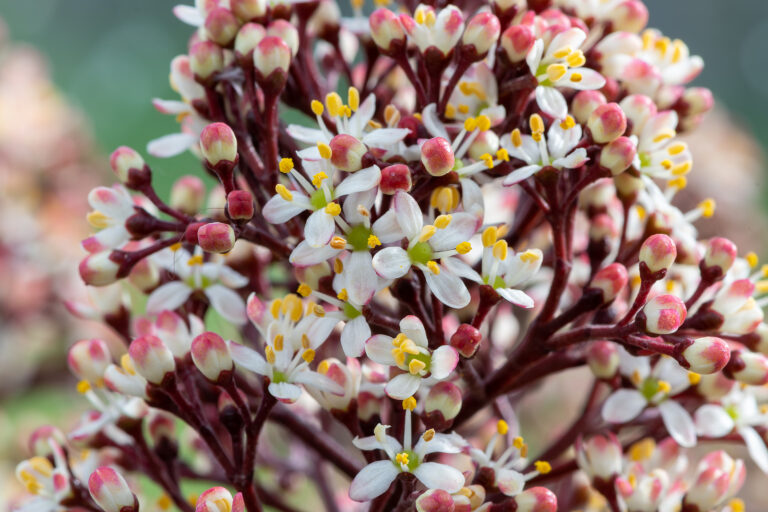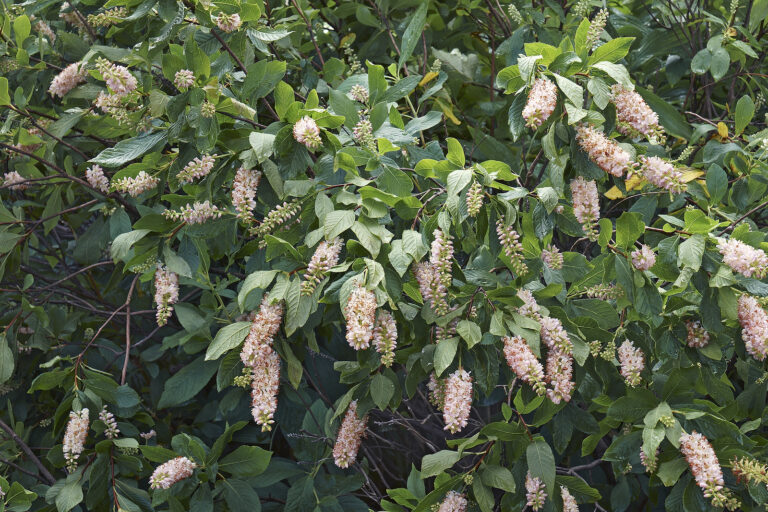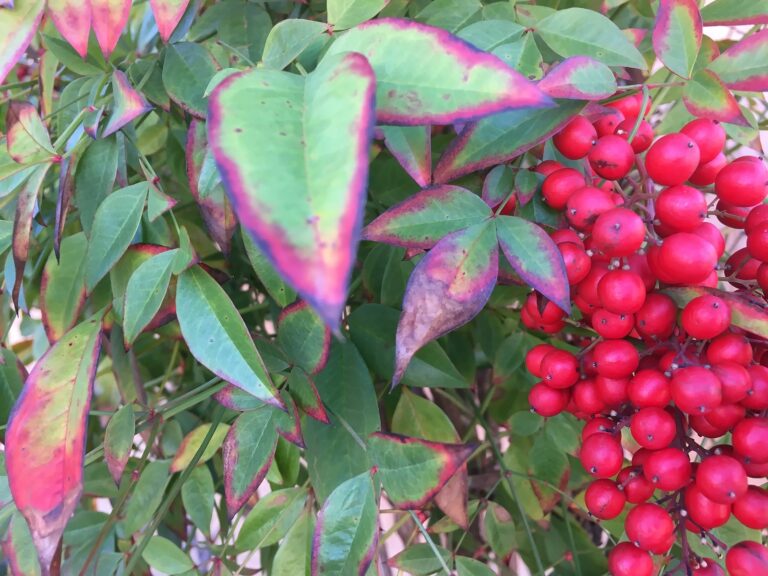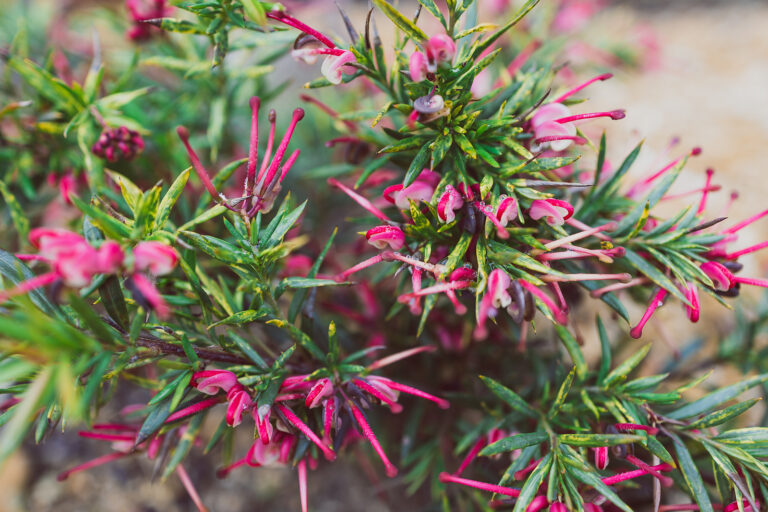How to Grow Exochorda – Pearlbush
Exochorda — commonly called Pearlbush–is a deciduous shrub grown for its arching habit and abundant, showy, cup or saucer-shaped white flowers. Flowers appear in loose, spikelike clusters and open from a profusion of buds resembling pearls.
Exochorda resembles spiraea to which it is related. Flowers are most showy in spring, then the plant fades into the landscape. It is important to place Exochorda where it can be most appreciated in spring. Exochorda is ideal for shrub borders or used as an isolated specimen.
Exochorda is a genus of four species of deciduous shrubs. Exochorda is native to woodlands from Central Asia to China and Korea.
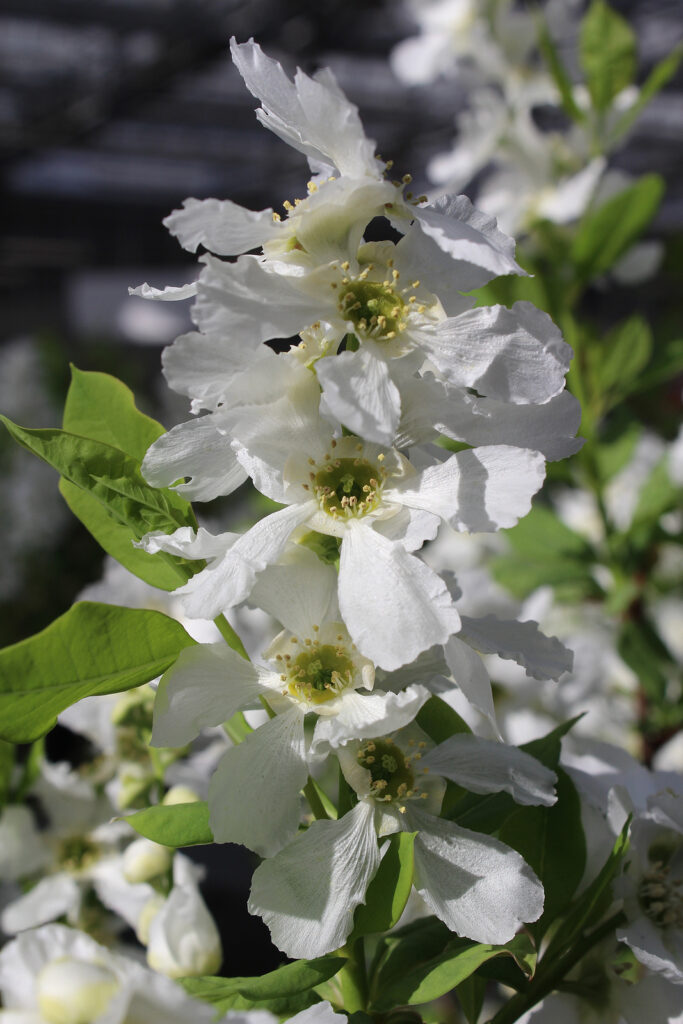
Get to know Exochorda
- Plant type: Deciduous shrubs
- Growing zones and range: Zones 5 to 9
- Hardiness: Hardy to Zone 5
- Height and width: 10 to 15 feet (3-5m) tall and wide
- Growth rate: Medium
- Form and habit: Rounded, arching shape
- Foliage: 1.5-2 inch (3.8-5.1cm) roundish leaves
- Flowers: String-like clusters of pearl-shaped flower buds; buds open into white blossoms about 1.3-2 inched (3.3-5.1cm) across
- Bloom time: Midspring; flowers usually last about a week to 12 days
- Uses: Shrub border, specimen
- Common name: Pearlbush
- Botanical name: Exochorda
- Family name: Rosaceae
- Origin: Central and East Asia
Where to plant Exochorda
- Plant Exochorda in full sun or partial shade.
- Plant Exochorda in almost any soil, but prefers well-drained, acid soil.
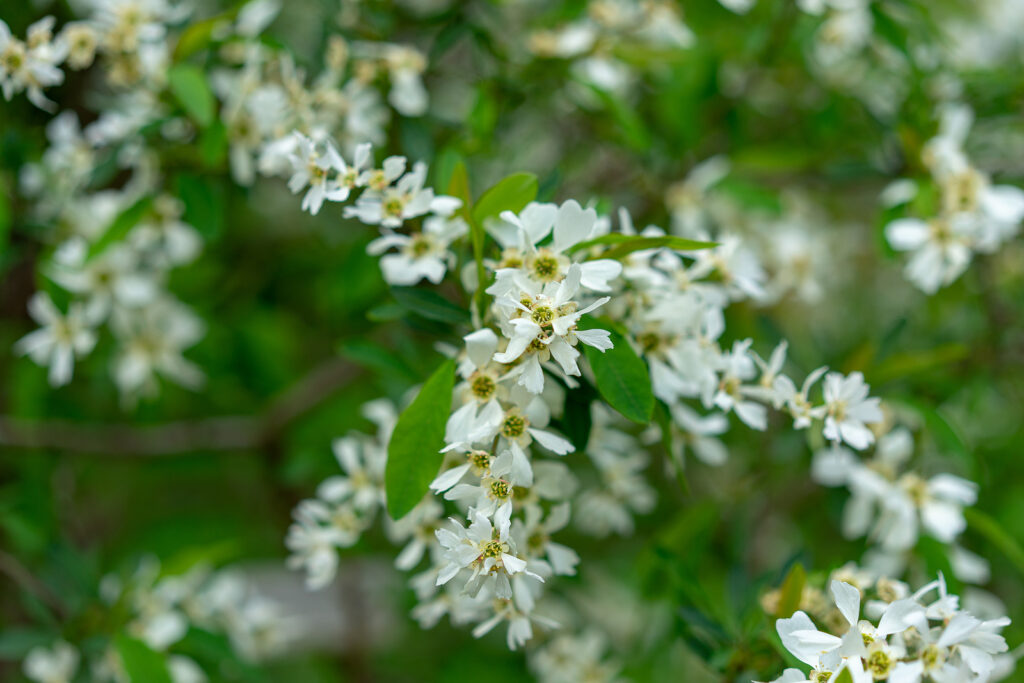
When to plant Exochorda
- Plant Exochorda in early spring so the shrubs have a season to grow before winter comes.
- Exochorda are not easy to establish in the garden if planted bare-rooted and should ordinarily be bought as container-grown plants or balled and burlaped, with their roots in their original soil ball wrapped in burlap.
Planting and spacing Exochorda
- Space Exochorda 10 to 15 feet (3-5m) apart.
How to water and feed Exochorda
- Give Exochorda regular water.
- Feed Exochorda with an all-purpose organic fertilizer in spring.
How to care for Exochorda
- Exochorda will take considerable neglect.
- To counteract Exochorda natural tendency toward gangliness, the tips of young stems should be pinched off from time to time; the pinching rechannels growing energy outward through many shoots and side shoots.
- It’s also a good idea to remove weak branches because only the strong ones produce a wealth of flowers. Such pruning should be done immediately after the flowers fade.
Exochorda pests and diseases
- Exochorda is seldom bothered by pests or diseaases.
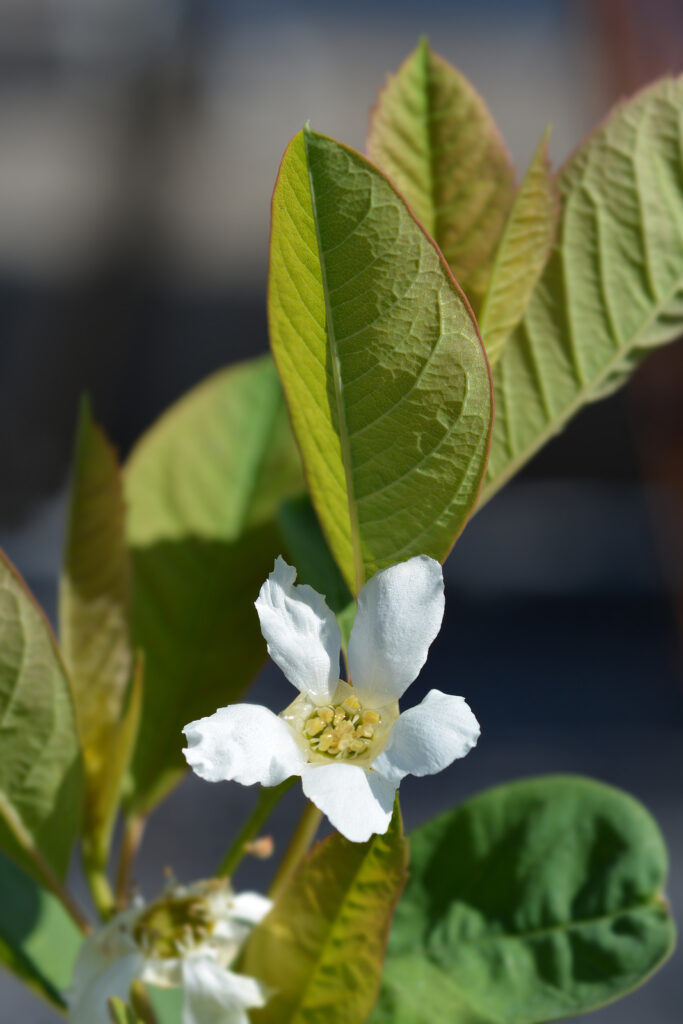
Exochorda propagation
- Exochorda plants can be propagated from softwood cuttings of young growth taken in late spring or early summer or by forcing a branch to grow roots by the method known as ground layering.
- Sow seed in a seedbed in autumn.
Exochorda varieties to grow
- Exochorda ǵiraldii, resembles the more widely grown E. racemose, but with slightly smaller flowers and red tints in leaf veins and flower stalks.
- E. ǵiraldii wilsonii, Wilson pearlbush, grows 12-15 feet (3.7-4.6m) tall and produces an abundance of flowers up to 2 inches (5.1cm) across.
- E. macrantha, ‘The Bride pearlbush’), hybrid, grows only 3-4 feet (7.6-10.2cm) tall and is particularly useful in small gardens; its flowers are 2 inches (5.1cm) across.
- E. racemosa (E. ǵrandiflora), Common pearlbush, native to China, grows 10-12 feet (3.1-3.7m) tall and has flowers about an inch or more across. In small gardens, remove lower branches to make an upright, airy, multistemmed small tree.

